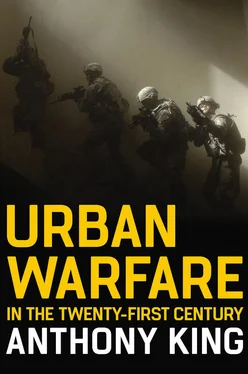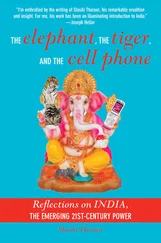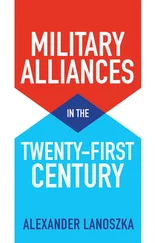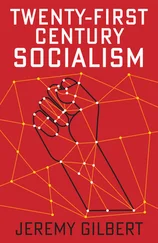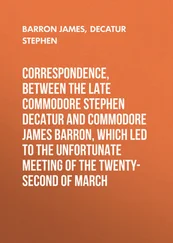Mosul may, then, stand alone as the Stalingrad of the early twentyfirst century. For Western forces, it was certainly the largest and most intense urban campaign of the past two decades. Yet, despite its scale, Mosul was not an aberration. Urban combat has become a central, maybe even the defining, form of warfare in the twenty-first century. In the twentieth century, armies prepared to fight in the field. Today, it seems all but inevitable that they will fight in cities.
The rise of urban warfare is deeply troubling. The scale of human suffering and the destruction it has inflicted have often been terrible. Nevertheless, it would be quite wrong to suggest that urban warfare itself is new. Urban warfare was a regular occurrence in antiquity. Indeed, the siege and the sacking of cities were central themes in classical literature, as the Iliad and the Odyssey demonstrate. Roman literature is also replete with depictions of urban warfare. Unlike the Iliad , Virgil’s Aeneid was not a primarily a poem about battle. Yet, some of its most powerful passages describe the sacking of Troy, the most famous siege of all:
There we found the fighting so heavy that it seemed there were no battles anywhere else, that this was the only place in the city where men were dying. We saw Mars, the irresistible God of War, Greeks rushing to the palace, men with shields locked over their backs packing the threshold, ladders hooked to the walls and men struggling to climb them right against the doorposts, thrusting up their shields on their left arms to protect themselves while their right hands gripped the top of the walls. 17
Virgil took his imagery from Roman siege techniques; his observation of the details of the escalade are striking. His moving depiction of the destruction of Troy seems to be a subtle interrogation of the hypocrisies of Roman imperialism.
Yet, written between 29 and 19 BCE during Augustus’s Principate, Virgil’s account of urban warfare was anything but new, even then. On the contrary, by the first century BCE, siege warfare was a prominent, even primary, form of warfare. The Old Testament, composed between about 1200 and 165 BCE, records the sacking of many cities, including Nineveh, and, of course, Jericho: ‘And they utterly destroyed all that was in the city, both man and woman, young and old, and ox, and sheep, and ass, with the edge of the sword.’ 18Archaeology affirms the literary evidence. According to the archaeological research, humans first started to inhabit urban settlements at the beginning of the Neolithic period, about 10,000 years ago; Jericho has been dated to 9000 BCE. Similarly, in Anatolia, Çatalhöyük seems to have been inhabited from 7500 to 5700 BCE. 19Both display signs of militarization. Jericho was surrounded by rock-cut ditch and three-foot-thick walls (see Figure 1.1). 20The original Jericho was destroyed in c. 5000 BCE. Although Çatalhöyük is not so obviously fortified, it was plainly a stronghold. The settlement consists of a series of tightly packed, baked mud houses, accessible only through the roof by means of a ladder, and with blank exterior walls (see Figure 1.2). Moreover, wall paintings of what may have been a warrior have been discovered inside the settlement. 21
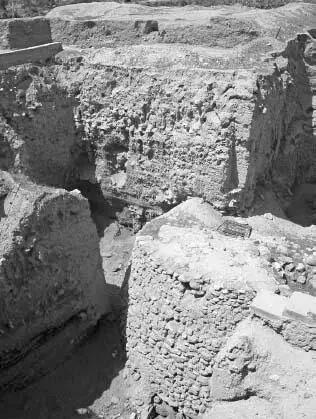
Figure 1.1: The ancient walls of Jericho
Source: Daniel Case / Wikimedia Commons / CC BY-SA ( https://creativecommons.org/licenses/by-sa/3.0).
Fortified settlements may have predated agriculture and the state. However, the first true cities emerged in Mesopotamia around 3000 BCE. The first city-states appeared in Sumer, an area that is now southern Iraq but was then a coastal, estuarine area bordering the Gulf. Ur, for instance, was founded about 2100 BCE; at its peak, it had 35,000 inhabitants. 22There were approximately twenty other rival city-states in existence at this time. The subsequent history of Bronze Age Mesopotamia consisted of the cyclical rise and fall of agrarian empires, centred on the cities of Akkad, Sumer, Babylon, Assyria and Elam. Warfare – and above all siege warfare – was a central element of the almost constant conflict between these empires.
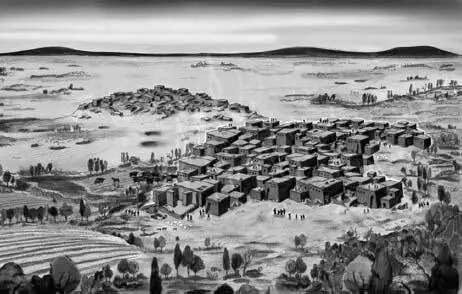
Figure 1.2: Çatalhöyük
Source: Çatalhöyük Research Project ( http://www.catalhoyuk.com/).
The Assyrian Empire of the seventh century BCE illustrates this process. Between 711 and 627 BCE, Assyria attained dominance in the region under a succession of powerful kings: Sennacherib, Esarhaddon and Ashurbanipal. The recent battle of Mosul raged around their palaces in Nineveh. From the late eighth century, Assyrian kings engaged in a series of successful campaigns against their Elamite and Babylonian rivals, defeating them in battle and sacking their cities. The extraordinary murals in Ashurbanipal’s palace include detailed depictions of successful sieges. Having taken Babylon, Ashurbanipal attacked Elam and eventually besieged and took the royal city of Hamanu. One of the friezes shows Assyrian soldiers climbing ladders, while others, protecting themselves with shields, undermine the walls. The corpses of Elamite soldiers sink in the river. 23
Siege warfare and urban fortification reached a very high level of development in the Mesopotamian Bronze and Iron Ages, then. Similar developments are observable in other major pristine civilizations of the Americas, China and India. All agrarian city-states were able to generate hitherto unachievable concentrations of military power. They built and fortified very large cities, but were also able to besiege, assault and sack their enemies’ cities. Later, around the fourth century BCE, states developed sophisticated siege engines and catapults. The power of the Roman Empire, for instance, rested not primarily in the superiority of the Roman legions in open battle but in their unique ability to build fortifications in the field and to take apparently impregnable fortresses like Alesia, Maiden Castle and Masada. Urban warfare certainly reached a higher level of sophistication and intensity in the era of great ancient agrarian empires in the Middle East and Mediterranean from 3000 BCE to the fall of Rome in 476 CE. However, urban warfare was already established, when the Greeks and Romans perfected the art of siege warfare.
Urban warfare is, then, as old as cities themselves. The sad conclusion must be that from the moment humans, as aggressive, intelligent and highly social primates, began to live in urban settlements, they also began to fight each other for them and to kill each other in them. Indeed, while it might be comforting to preserve a pacific vision of early human urban evolution, evidence suggests that warfare was in fact always an integral part of city life. From the outset, urban settlements were primarily defined by the wall that surrounded them and protected their inhabitants. The city may well have been the cradle of civilization; but it was also the crucible of war.
Understanding Contemporary Urban Warfare
Urban warfare is ancient. Its long provenance is widely recognized by commentators today. Yet it has, once again, come to prominence in the early twenty-first century. Clearly, the reappearance of the urban battle has engendered deep concern, not only among the armed forces who have to fight in this dangerous and difficult terrain, but also among politicians, political leaders, humanitarian agencies and, of course, citizens themselves. Many towns and cities have been destroyed – often irrevocably – in recent decades; huge numbers of civilians have been killed, wounded or displaced. The suffering has been truly terrible. There seems little doubt that urban conflict and warfare will continue to proliferate in the coming decades. It will remain a global issue, affecting the lives of millions, threatening major political, economic and cultural centres. If the political and social implications of the rise of urban warfare are so profound, it cannot be dismissed as a technical military issue. On the contrary, precisely because urban warfare always involves large civilian populations, it is imperative that policymakers, scholars, humanitarians, commentators and the general public all understand the realities of such conflicts.
Читать дальше
